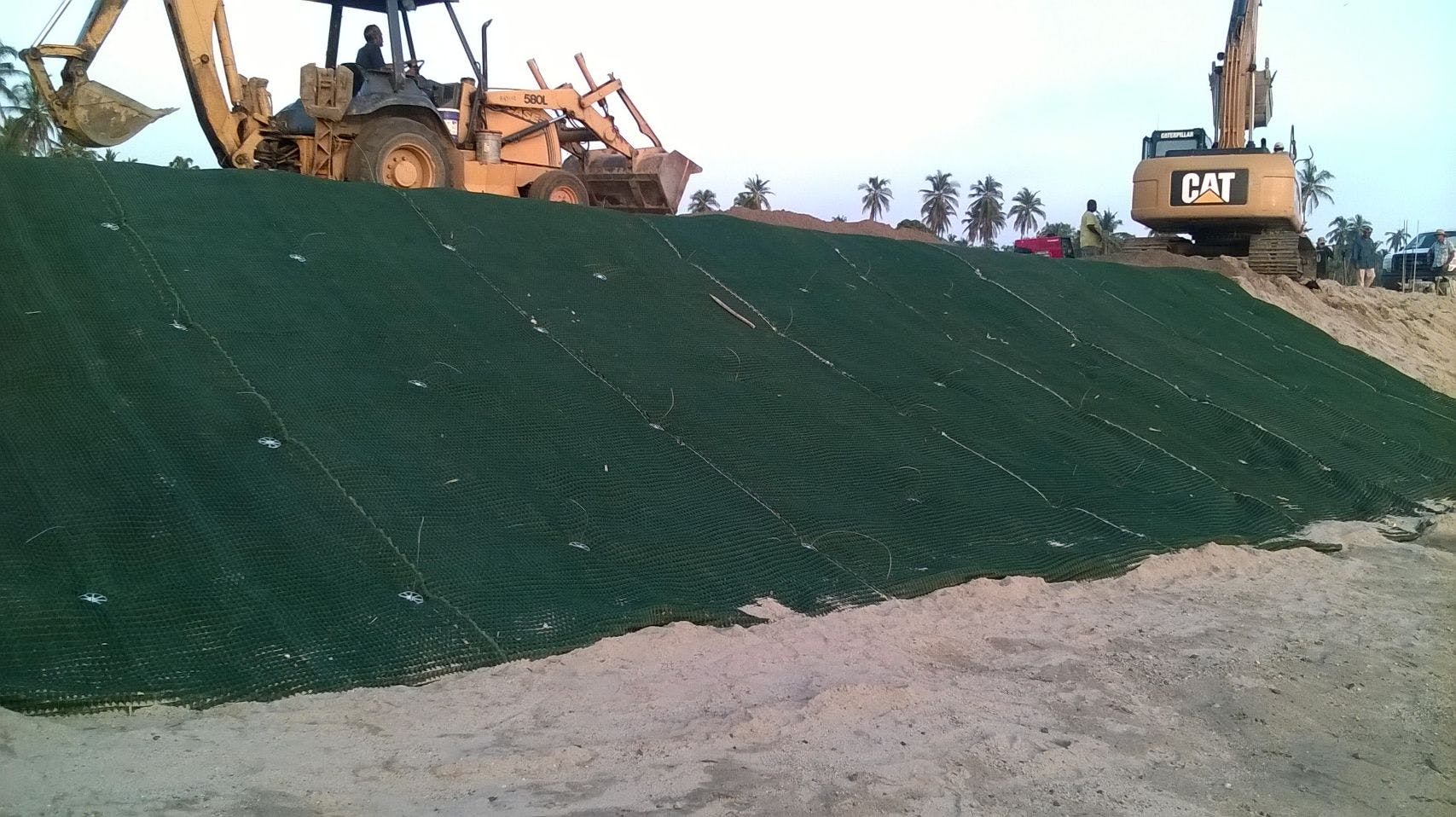
How to drive earth anchors in adverse conditions
Anchors vary in shape, size, and material, including steel, aluminum, stainless steel, and ductile iron. At Solmax, we use percussion-driven Engineered Earth Anchors (EEA) to establish a deep artificial root system for PROPEX® Armormax®. PROPEX Armormax, paired with our High-Performance Turf Reinforcement Mats (HPTRM), provides up to 75 years of slope stabilization and erosion control.
Our HPTRM has been installed over 35 million square yards (30.35 million m^2) worldwide. PROPEX Armormax's versatility allows it to adapt to various site conditions. For instance, the soil in Tampa, FL differs from that in Tucson, AZ. The specific site conditions and project goals dictate the EEA type needed. Solmax offers three anchor sizes to accommodate different conditions.
Erosion prevention typically needs a pull-out capacity of 200-300 pounds (90.7-136 kg), suitable for B1 anchors. However, slope stability projects may demand over 1,500 pounds (680.4 kg) pull out capacity, necessitating larger anchors like B2 or B3.
Rocky or weathered rock soils require stronger anchors, possibly made of ductile iron. Ground with a shallow competent rock layer, like granite, isn't suited for percussion-driven EEA; these conditions require drilled anchors.
Sometimes, EEAs must penetrate the frozen ground. Although most PROPEX Armormax installations avoid winter, delays, like those experienced at the Reinland Drainage Channel in Manitoba, CA, can push the schedule into colder months. When ground freezes to a depth of 18-24 inches (45.7-61 cm), it's advisable to postpone the project until spring, as the frozen layer naturally prevents erosion.
Just as with everyday products, stronger and larger anchors cost more. Engineers should ensure not to under-specify, risking public and environmental safety, while also offering project owners excellent value without excessive specifications.
Recent tests by Colorado State University and Solmax demonstrate the immediate hydraulic benefits of EEAs in erosion control. For more on this study and a chance to earn 1 PDH, check out our online program.
Explore more blogs
View allHow to combine engineered earth armoring with greywater treatment
Resilient water management by combining greywater recycling with engineered earth armoring for irrigation, erosion control, and increased property value.
How can geosynthetics help energy transition?
Geosynthetics accelerate agricultural outputs and improve resilience by optimizing water management through enhanced irrigation efficiency and providing structural stability to agricultural infrastructures like dams and reservoirs.
How can geosynthetics accelerate agriculture outputs and improve resilience?
Geosynthetics accelerate agricultural outputs and improve resilience by optimizing water management through enhanced irrigation efficiency and providing structural stability to agricultural infrastructures like dams and reservoirs.